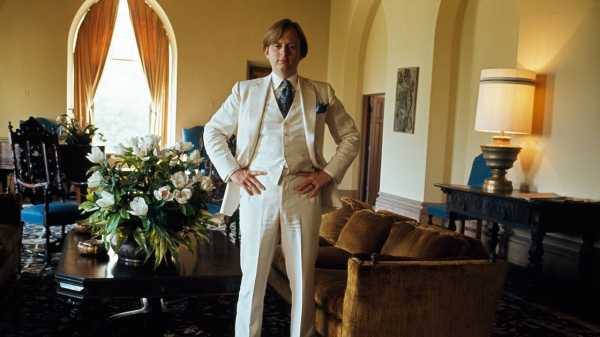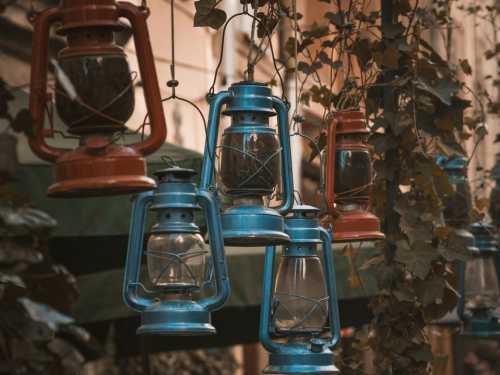
There’s an essay by Zadie Smith called “Dead Men Talking,” in which she suggests that every writer has an ideal reader. Smith, to her embarrassment, identifies herself as the ideal reader of E. M. Forster. “I would much prefer to be Gustave Flaubert’s or William Gaddis’s or Franz Kafka’s or Borges’,” she writes. Every reader, she continues, will have “three or four writers like this in your life, and likely as not you’ll meet them when you’re very young.”
I saw Smith read this essay as a lecture in 2003, in Central Park, in New York City, in summer. She wore a flower in her hair. I was twenty-two. I found the writing for which I was the ideal reader a few months later, when my roommate lent me a copy of Tom Wolfe’s 1973 anthology, “The New Journalism.” Can you be the ideal reader of an anthology? I was.
“The New Journalism” was edited by Wolfe, who included an excerpt from “The Electric Kool-Aid Acid Test” and his essay “Radical Chic & Mau-Mauing the Flak Catchers.” He also wrote a polemical and hubristic three-part introduction and an appendix. Wolfe made fun of contemporary novelists and made fun of newspaper writing and then described the development, starting around 1960, of a group of people who were writing journalism—fact-based reportage—that read like novels, journalists who, in Wolfe’s words, “wanted to dress up like novelists.”
These journalists, Wolfe wrote, used four devices: scene-by-scene construction, realistic dialogue, a third-person point of view (where the reader feels as if he or she is inside a character’s mind), and then, in contrast to traditional newspaper journalism, a descriptive eye, where a subject’s clothing, manners, eating, and living room are as important for the writer to document as the subject’s words. “The basic reporting unit is no longer the datum, the piece of information, but the scene, since most of the sophisticated strategies of prose depend upon scenes,” he wrote. He called the process Saturation Reporting: “Often you feel as if you’ve put your whole central nervous system on red alert and turned it into a receiving set with your head panning the molten tableau like a radar dish, with you saying, ‘Come in, world,’ since you only want . . . all of it . . . ”
Certain essays in the anthology cohered into a vision of literature of which I was the ideal reader: Joan Didion’s “Some Dreamers of a Golden Dream,” Hunter S. Thompson’s “The Kentucky Derby Is Decadent and Depraved,” Michael Herr’s “Khesanh,” and Terry Southern’s “Twirling at Ole Miss.” Just as Smith had warned, the writers for whom I was the ideal reader were not, as she put it, “the writers you most respect, most envy, or even most enjoy. They are the ones you know.” I was not necessarily the ideal reader of Tom Wolfe, but it was he who had identified a strategy and an approach and pointed out writers for whom they had worked, those who avoided “a century-old British tradition in which it was understood that the narrator shall assume a calm, cultivated and, in fact, genteel voice.” He described the devices of his own prose: the “Hectoring Narrator,” who might talk to or insult the characters; the “Downstage Voice,” where Wolfe would adopt the tone and vocabulary of one of his characters in a paragraph of background or history; and his famous use of punctuation. “I found that things like exclamation points, italics, and abrupt shifts (dashes) and syncopations (dots) helped give illusion not only of a person talking but of a person thinking,” he wrote.
Not everybody liked the New Journalism. “I’ll have your goddamn femurs ground into bone splinters if you ever mention my name again in connection with that horrible ‘new journalism’ shuck you’re promoting,” Hunter S. Thompson wrote in a 1971 letter to Wolfe. (He ended up with two chapters in the anthology.) Renata Adler, a contemporary, once accused Wolfe of making up facts, and wrote that she “detested” the new style, which she saw as a corruption of a style of first-person-inflected writing that had been invented in The New Yorker. “The facts dissolved,” she wrote. “The writer was everything.” By the time I became the ideal reader of “The New Journalism” it was, of course, the old journalism, as dated as E. M. Forster, and even more so. It was out of style and ridden with all the usual symptoms of unchecked white male privilege. There was, in the early aughts, instead another movement in creative nonfiction, a genre you might call kinetic nonfiction: Mark Bowden writing about downed helicopters in Somalia; Jon Krakauer on climbing Everest; Susan Orlean on stealing orchids; Sebastian Junger on the perfect storm.
In 2005, an anthology came out called “The New New Journalism,” which was in many ways an explicit rejection of Tom Wolfe’s shenanigans. This generation of nonfiction writers cracked fewer jokes, avoided verbal acrobatics, and did not have run-on sentences or exclamation points. They generally wrote in the third person and adopted what looked like a politically neutral posture. If they were uncertain about the politics of being an upper-middle-class white person writing about a poor Latin family in the Bronx, or about turning a military tragedy into the stuff of a Robert Ludlum thriller, they never let on to it. It was not a journalism of self-consciousness but of authority. The emphasis was on journalistic method rather than experimentation with form and language. Nonfiction writing had emerged from the candy-flake tangerine-colored fog into something less stylized—the emphasis on “scenes” remained, but there was a return to the genteel, “invisible” voice of the narrator.
Unlike the New Journalists, some of whom admitted to (or were accused of) chronological elisions and embellishments of dialogue, the reader could trust that the new generation of American nonfiction writers had recorded the interviews and transcribed the quotes and had been fair with their sources. I respected the journalistic rigor, and I was half-convinced by those who argued that there was something noble in erasing the author from the narrative. But can I say that I found it less pleasurable to read? I like nonfiction writing with a distinctive narrative voice, I like metaphor, I like ornate descriptions of the physical world. I like humor, sarcasm, and irony.
When Tom Wolfe wrote “The Electric Kool-Aid Acid Test,” he wrote a book about LSD in a way that tried to capture the feeling of being on LSD. Wolfe claimed to the end that he never took the drug himself. As he wrote in the afterword, “I have tried not only to tell what the Pranksters did but to re-create the mental atmosphere or subjective reality of it.” To do so, he drew from in-person and recorded interviews, and films and the writing of his subjects, including Ken Kesey’s letters to Larry McMurtry. He perfected the downstage voice.
Today there is not really a place in contemporary literature for Tom Wolfe’s style of New Journalism, just as it wouldn’t be cool to show up at a book party in a white linen suit. Wolfe’s tone lives on as a certain breathlessness that ruins a lot of contemporary writing, a style that is often used to generate excitement about celebrities with upcoming movie releases. Such a style misses the point of the project undertaken by Wolfe and his generation, people who were born in the nineteen-thirties and became famous in the nineteen-sixties. It was a time of intense social change, and the traditional way of describing the world, both in fiction and nonfiction, was inadequate to the task. The point was to do something new: if the California dream had punctured, Didion described the sunshine in a gothic register; if Vietnam was an imperial conquest founded on lies, Herr channelled Joseph Conrad. Wolfe’s candied prose style befitted the colors of the Pranksters’ costumes and whistles and his own preference for the plastic and garish over what he describes in “The Electric Kool-Aid Acid Test” as “a fatherland of the mind, where it is all better and more philosophic and purer, gadget-free, and simpler and pedigreed.” What defines so much of the anthology are its attempts to discern the contemporary, whether it was LSD or shifting race relations or fad diets, in literary forms that also felt unfamiliar. “The idea was to get the objective description, plus something that readers had always had to go to novels and short stories for: namely, the subjective or emotional life of the characters,” Wolfe wrote. It was a generation of writers who invented, and it was Tom Wolfe who wrote their manifesto.
Sourse: newyorker.com






